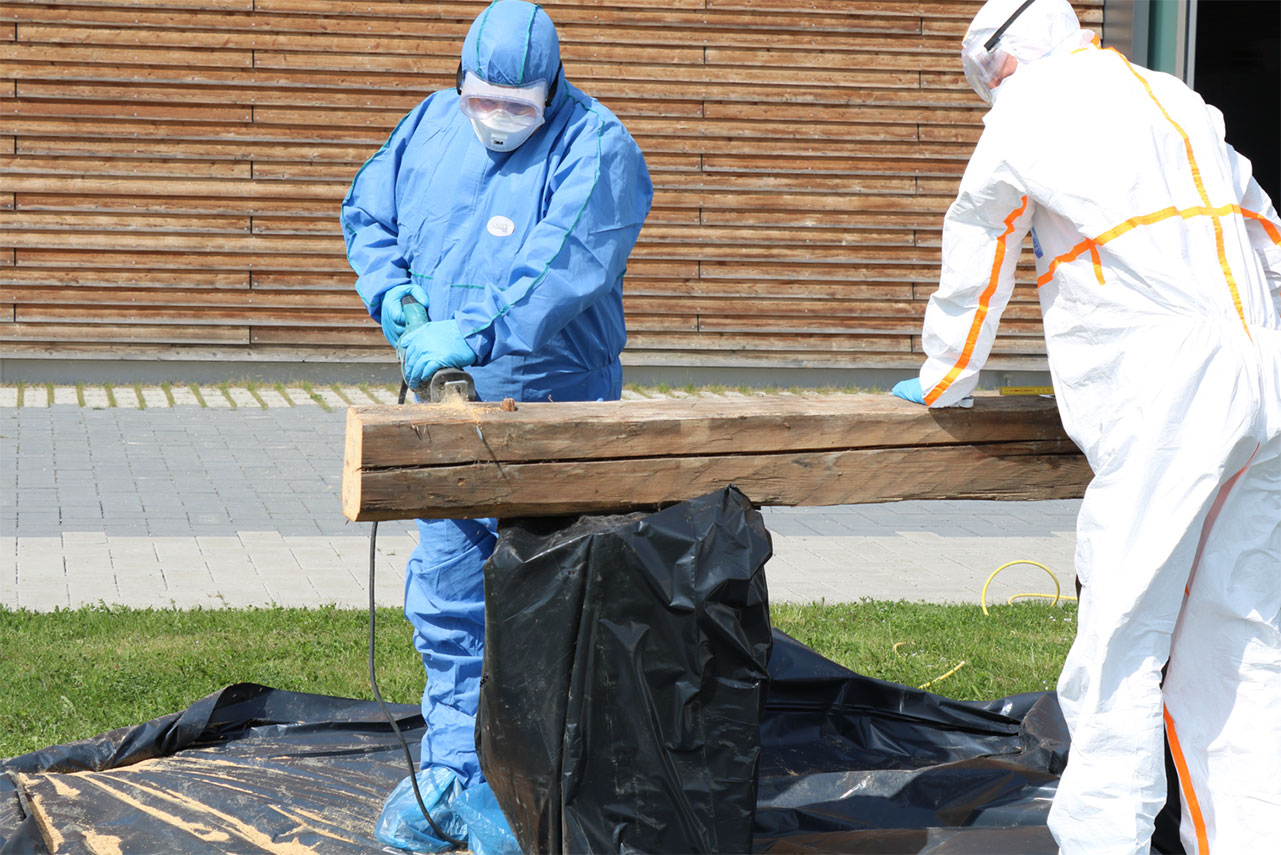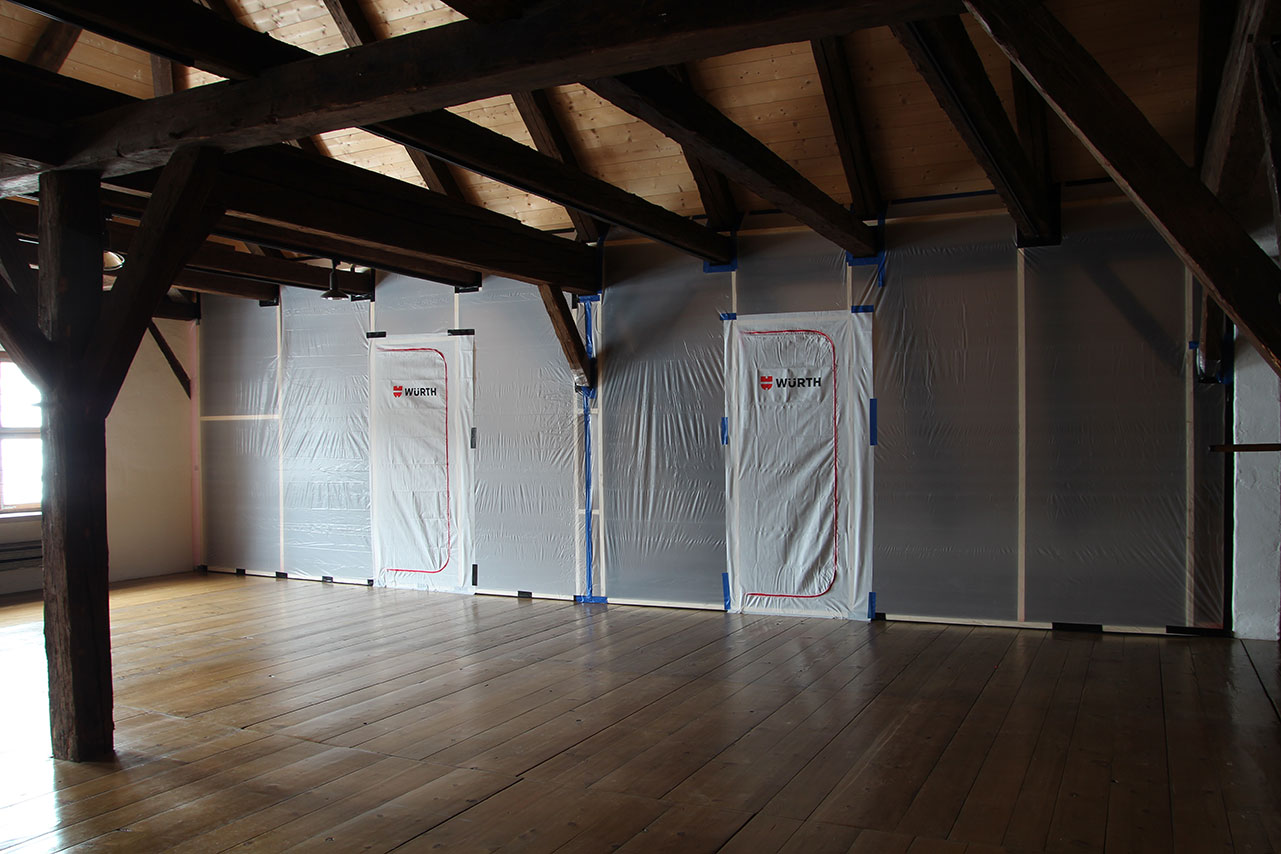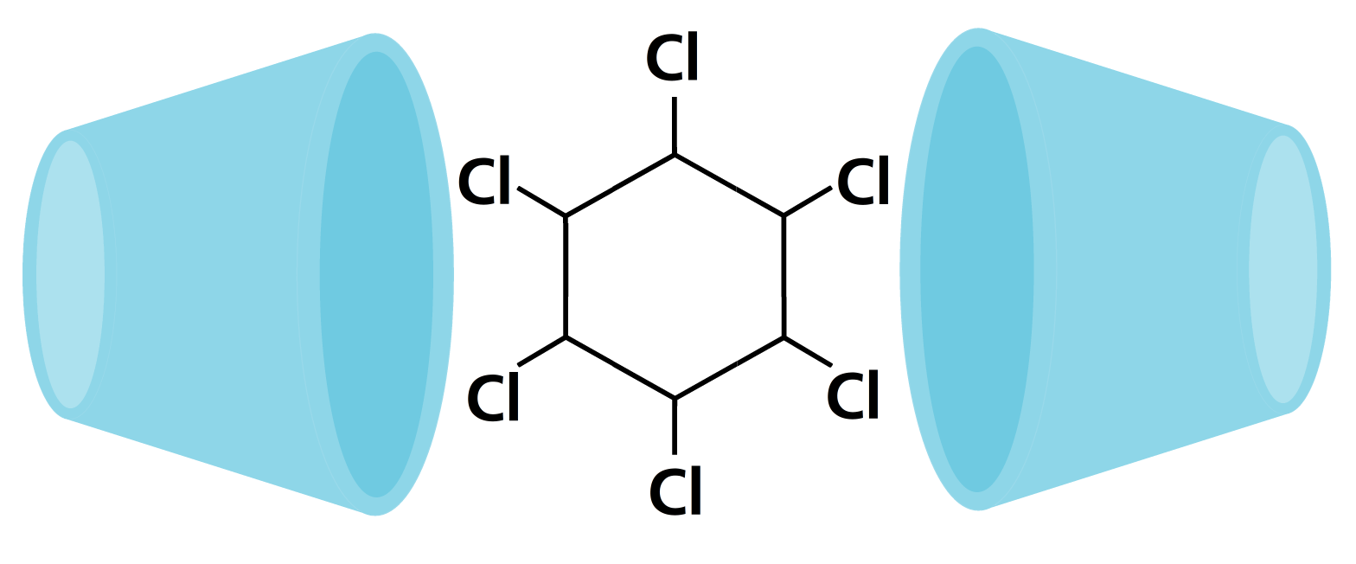In Germany, approximately 3 million buildings are potentially contaminated with the wood preservatives lindane and pentachlorophenol (PCP). Current solutions for minimizing exposure to these contaminants include the removal or isolation of contaminated areas or an increase in air exchange rates. In terms of resources, energy and heritage conservation, these methods have a detrimental effect on the preservation of old buildings and can result in high costs.
The novel approach in the CycloPlasma project applies a combination of innovative adsorber material on the wood surface and plasma-based indoor air purifiers to renovate contaminated wood structures. Both the wood and the contaminated interiors are treated lastingly without leaving any residues or posing any health risks.


